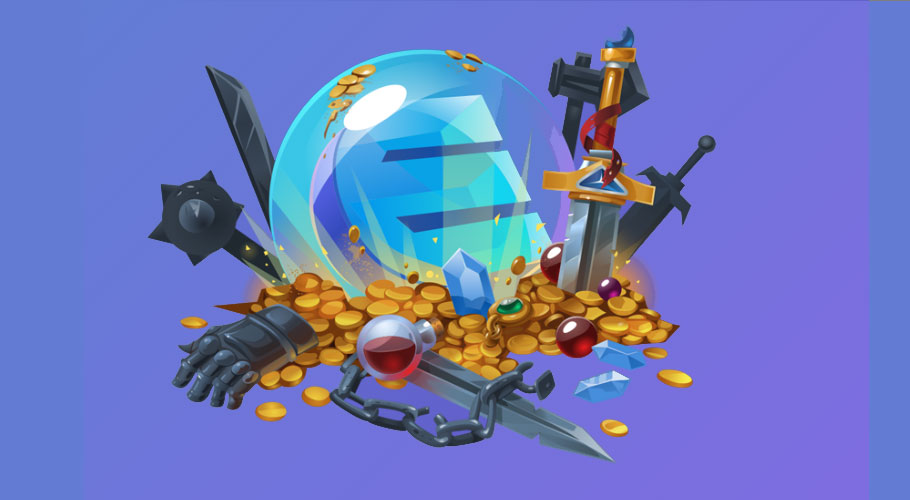Enjin, a blockchain based community gaming platform, today has announced the launch of blockchain asset support to EnjinX, its recently launched Ethereum explorer built for speed. The anticipated update includes full ERC-1155 integration, enabling gamers to search, browse, and verify next-generation Ethereum blockchain assets via EnjinX’s clean interface. In the announcement, Enjin also revealed additional information about their Blockchain Gaming Multiverse, which will be comparable to a real-life, decentralized Ready Player One.
Since EnjinX’s launch in December, the highly flexible blockchain explorer has quickly grown in popularity. To date, five leading token exchange platforms—Changelly, COSS, Kyber Network, GDAC, and Kriptomat—have collaborated with Enjin to create branded explorers using EnjinX’s technology, providing their users with a seamless transaction verification experience. Changelly, GDAC, and Kriptomat have also used the Enjin Platform to create ERC-1155 blockchain assets, which users can now browse via a custom platform-branded EnjinX interface.
Created by Enjin CTO Witek Radomski and developed alongside a community of leading Github developers, ERC-1155 has been cited as the next-generation Ethereum token standard. Because of its standardized data structures, any developer that integrates one ERC-1155 asset can integrate other similar Ethereum blockchain assets into their games, apps, and websites with very little extra effort. This creates an ecosystem perfect for inter-platform operability of assets, which Enjin calls a “Multiverse.”
Unlike Ready Player One, Enjin’s Blockchain Gaming Multiverse is a decentralized network of games and is not owned or controlled by one party. Thus, the battle between corporate greed and freedom of the masses seen in the film’s OASIS won’t be possible in the real-life version.
“A multiverse is created when multiple games and platforms choose to integrate and support shared in-game items, thus connecting separate gaming universes through inter-game operability of blockchain assets,” Enjin stated in the announcement. “This provides players an experience in which they can move through multiple worlds while taking their inventory with them.”
Now that EnjinX users can freely browse blockchain assets, Enjin has revealed further information regarding the Multiverse assets they’ve created, which are currently being integrated into more than 35 interconnected games, apps, and websites.
Enjin will also be creating an inter-game treasure hunt, much like the quest featured in Ready Player One. In this “Multiverse Quest,” players will move across multiple gaming worlds, gathering items to unlock collections and ultimately lead them to the grand prize, “the Monolith.” Backed by 1,155,777 Enjin Coin (ENJ), the Monolith was the first ERC-1155 token ever minted.
Just last month, Enjin also launched their Blockchain SDK for Unity and the Enjin Platform to Ethereum’s Testnet, enabling developers to create and manage blockchain games without writing any blockchain-related code. Currently, more than 2,000 games, apps, and websites are using the Enjin Platform to create and integrate ERC-1155 blockchain assets. Developers interested in creating or joining a Multiverse can sign up here to start using this powerful suite of blockchain game development tools.
Joining FIO
It was also announced this week that Enjin joined the Foundation for Interwallet Operability (FIO), in order to boost the usability of both cryptocurrencies and fungible/non-fungible tokens. In joining the consortium comprised of more than 15 members from leading crypto wallets and exchanges, Enjin has expressed their intention to integrate the FIO Protocol into the Enjin Wallet.
The FIO Protocol is a decentralized service layer that enables several major usability features across any blockchain, token, or coin. This includes functionality that puts an end to the need for a 64-character gibberish alphanumeric string to transfer crypto, integrated request for payment workflow that virtually eliminates errors when sending crypto, and standardized metadata that provides context for the purpose of a transaction. Future roadmap items include subscription billing, multi-signature routing for security, and cross-wallet data visibility.
